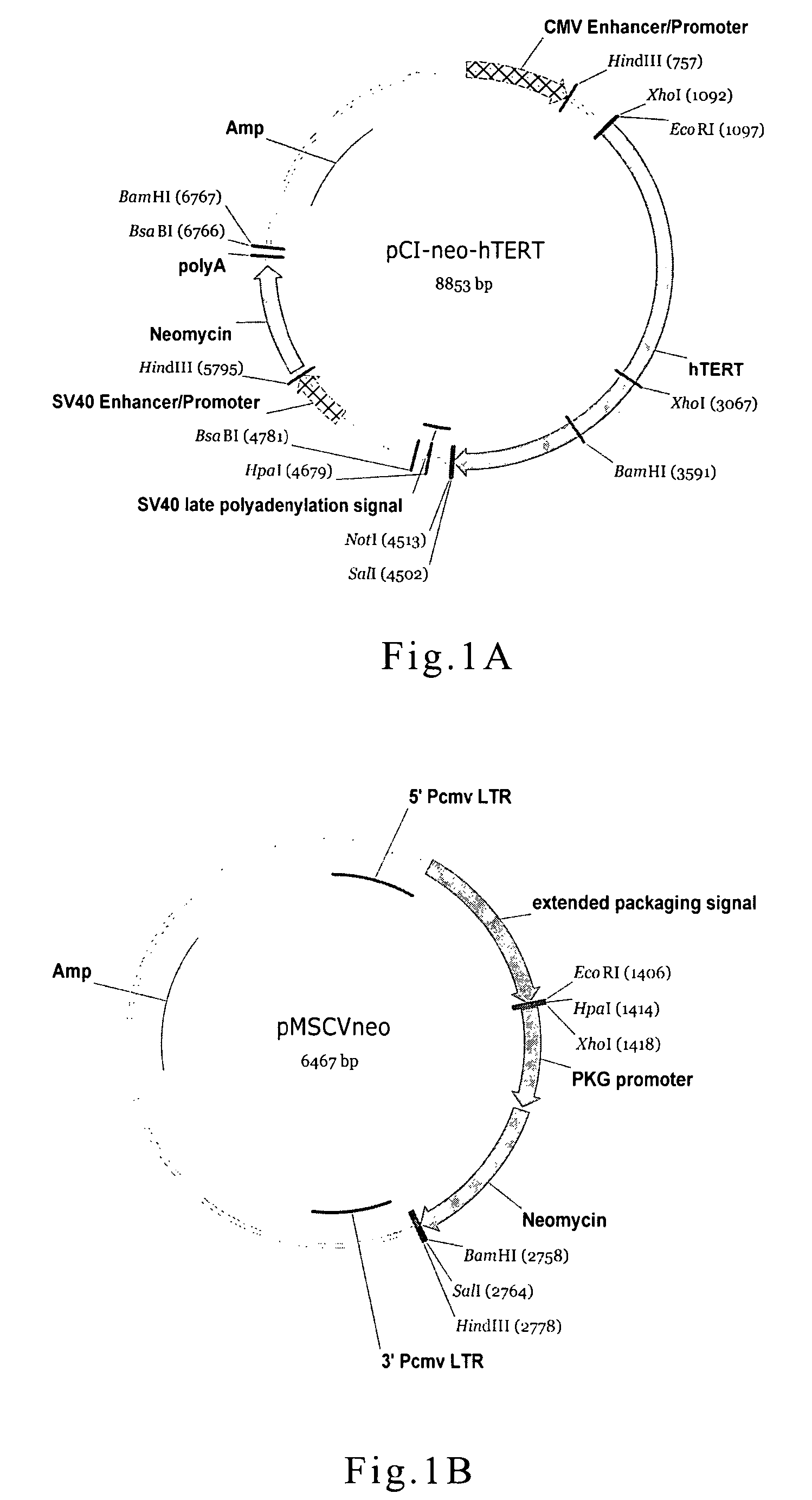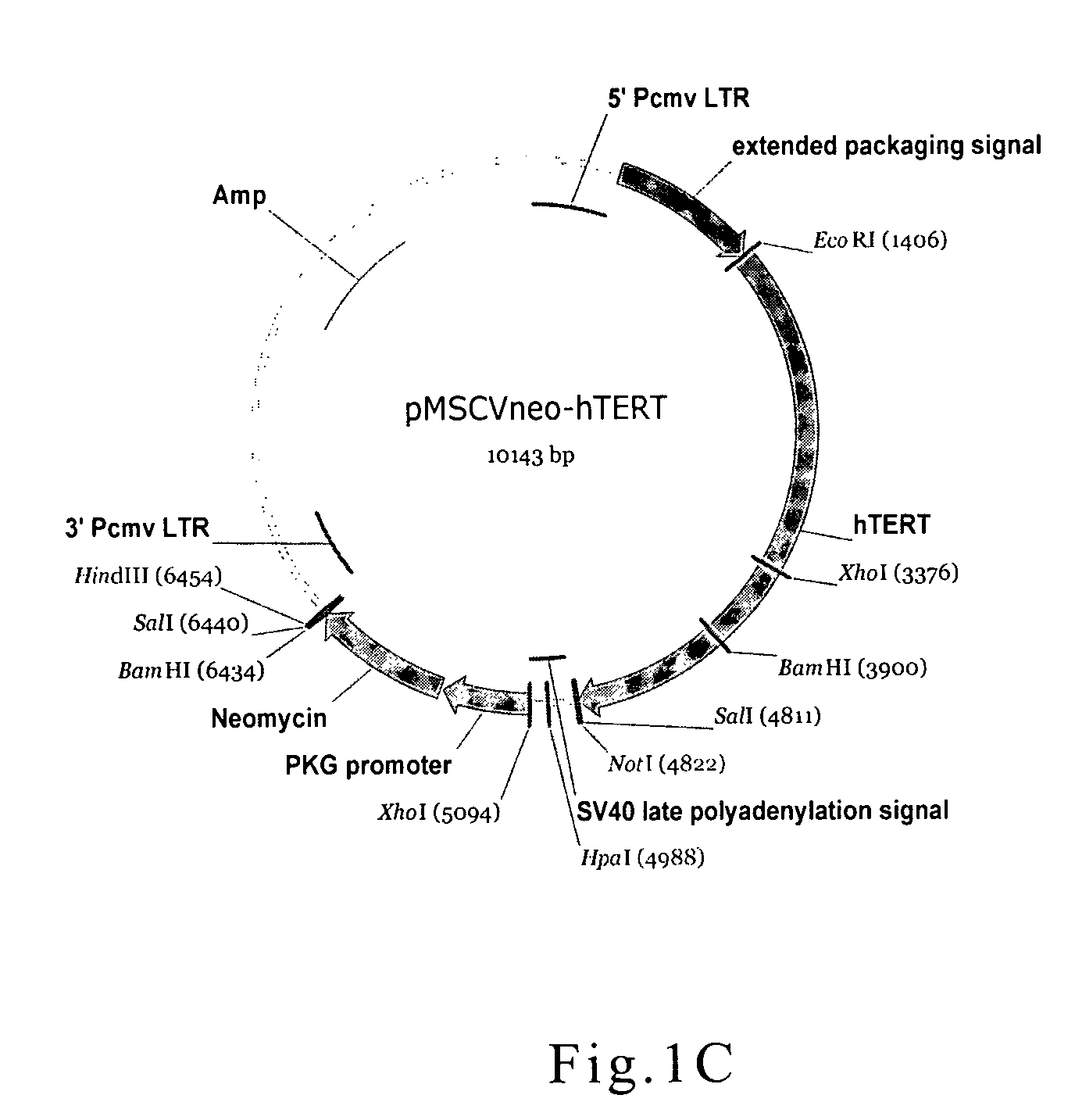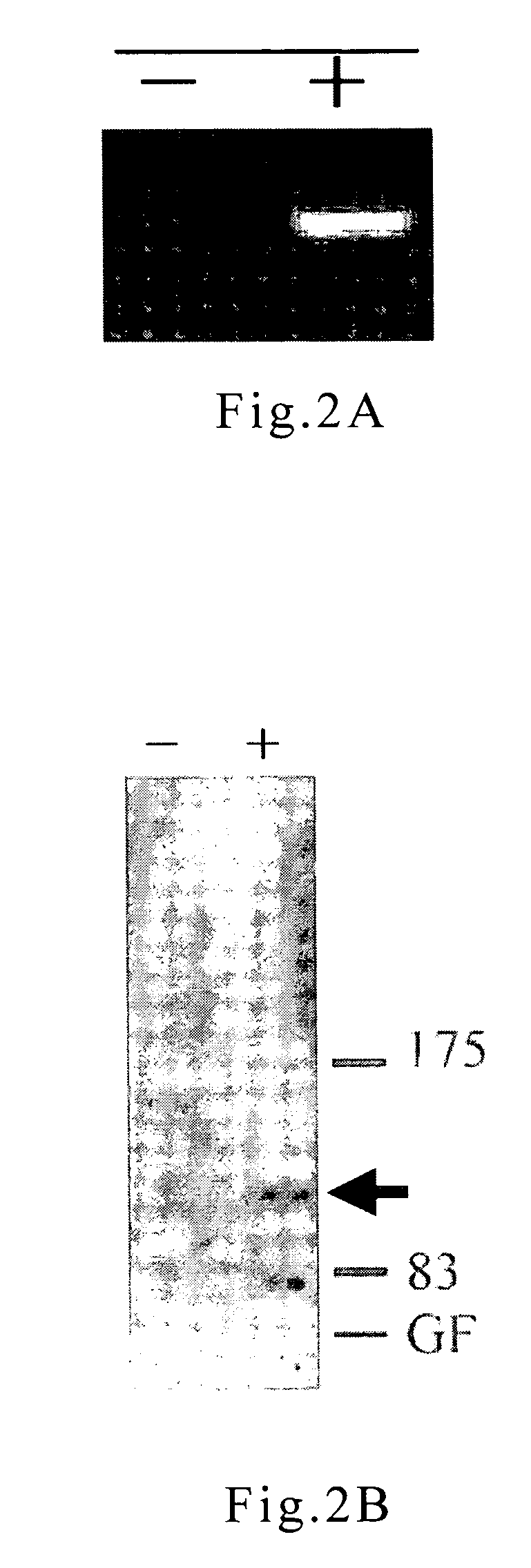Cell culture and method for screening for a compound useful in the treatment or prevention of hepatic cirrhosis
a cell culture and drug technology, applied in the field of cell culture model and drug screening method, can solve the problems of misconception of effectiveness, inability of monolayer cells to display the real physical condition, and criticism of high-speed screening technique for new drugs
- Summary
- Abstract
- Description
- Claims
- Application Information
AI Technical Summary
Benefits of technology
Problems solved by technology
Method used
Image
Examples
example 1
Preparation of Retrovirus Particles Containing Immortalizing Plasmid and Transfection of the Cell Line
[0048]In the present example, one of the cell lines used in the cell model was human HSC, which was transfected with virus particles carrying immortalizing vector. The plasmid pC1-neo hTERT (FIG. 1A, Promega Corporation) was restriction digested with EcoR I and Sat I, and pMSCV-neo (FIG. 1B, Clontech Laboratories, Inc.) plasmid was also digested with EcoR I and Xho I. The digested fragments were separated by electrophoresis, and desired fragments were purified with QIA quick Gel Extraction Kit (QIAGEN). Purified fragments were ligated via T4 DNA ligase, and the retroviral vector of pMSCV-neo hTERT was thus obtained (FIG. 1C).
[0049]The retroviral vector of pMSCV-neo hTERT constructed above was transfected into packing cells—RetroPack™pT67 or AmphoPack™-293 by Lipofectamine Reagents (Invitrogen Corporation). Culture medium containing retrovirus particles were collected and used to inf...
example 2
Construction of Retroviral Vector Containing Albumin Promoter
[0051]In the present example, hepatocyte cell line used in the cell model was Huh-7 cells transfected with retroviral vector containing albumin promoter. The transfected cells in the present invention were selected by hygromycin. Besides the hygromycin resistant gene, the retroviral vector also contained a liver cell specific albumin promoter and an enhanced green fluorescence protein (EGFP) reporter gene.
[0052]To clone albumin promoter, the sequence of accession number 00178343 in GenBank was used to design primers hSA-3(SEQ ID NO.1) and hSA-5(SEQ ID NO.2). RT-PCR was performed with primers hSA-3 and hSA-5 to amplify albumin promoter fragment from human cDNA, the sequence of the amplified fragment is shown in SEQ ID NO.3.
[0053]The gene fragment of the enhanced green fluorescence protein (EGFP) was amplified with two primers of EGFP-1 (SEQ ID NO. 4) and EGFP-3 (SEQ ID NO. 5) from plasmid pEGFP-1 (FIG. 3A, Clontech Laborato...
example 3
Construction of Retroviral Vector Carrying α-I-antitrypsin Promoter
[0055]In the present example, the cells used for the cell model can be Huh-7 cells transfected by a retrovirus particles carrying α-I-antitrypsin promoter. Besides liver cell specific promoter—α-I-antitrypsin promoter, the retroviral vector also encodes hygromicin resistant gene and EGFP gene.
[0056]The sequence of accession number 00177830 in GenBank containing liver specific α-I-antitrypsin promoter, which was used to design primers AAT-1 (SEQ ID NO.8) and AAT-2 (SEQ ID NO.9). RT-PCR was performed with primers AAT-1 and AAT-2 to amplify α-I-antitrypsin promoter fragment from human cDNA, and the sequence of the amplified fragment is shown in SEQ ID NO.10.
[0057]As described in example 1, the EGFP gene was amplified with two primers—EGFP-1 (SEQ ID NO: 4) and EGFP-3 (SEQ ID NO: 5) from plasmid pEGFP-1 (FIG. 3A, Clontech Laboratories, Inc.). The hygromicin resistant gene was amplified from plasmid pMSCV-hyg (FIG. 3B, Clo...
PUM
| Property | Measurement | Unit |
|---|---|---|
| emission wavelength | aaaaa | aaaaa |
| excitation wavelength | aaaaa | aaaaa |
| emission wavelength | aaaaa | aaaaa |
Abstract
Description
Claims
Application Information
 Login to View More
Login to View More - R&D
- Intellectual Property
- Life Sciences
- Materials
- Tech Scout
- Unparalleled Data Quality
- Higher Quality Content
- 60% Fewer Hallucinations
Browse by: Latest US Patents, China's latest patents, Technical Efficacy Thesaurus, Application Domain, Technology Topic, Popular Technical Reports.
© 2025 PatSnap. All rights reserved.Legal|Privacy policy|Modern Slavery Act Transparency Statement|Sitemap|About US| Contact US: help@patsnap.com



